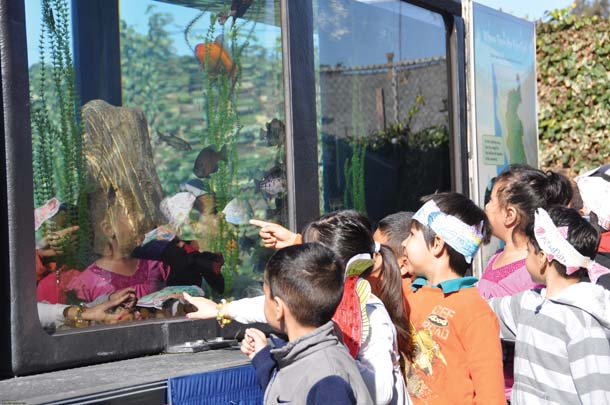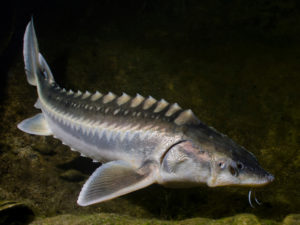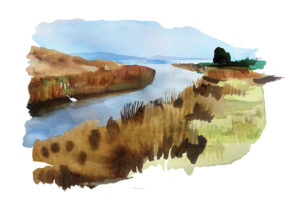They while away the hours in a nondescript building on the Alameda shore, waiting for their chance to wow the crowds. Not that they spend much time thinking about fame and glory. They are, after all, fish, and like most fish they are preoccupied with finding food, seeking secure environs, and, at certain junctures, mating.
But the fish the East Bay Regional Park District (EBRPD) keeps in an array of tanks and aquariums at Crown Memorial State Beach are anything but average. For one thing, they’re members of a dwindling complex of freshwater fish species that once thrived in the rivers and lakes of the greater Bay Area, including those of the East Bay.
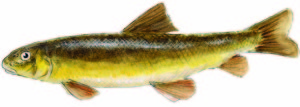

For another, these Sacramento perch, tule perch, hitch, rainbow trout, Sacramento blackfish, Sacramento pikeminnows, Sacramento suckers, and California roach are members of a performing troupe. They’re regularly transferred to a large tank mounted on a custom-built trailer and transported to schools and events around the East Bay, where they serve as a living display of the region’s beleaguered freshwater ecosystems — and enthrall people in the process.
“We log long days when we take the fish out,” says EBRPD resource analyst Joshua Porter, who is in charge of the mobile fish exhibit, as it’s officially known. “I’m here at 5 a.m. and may not be finished before 6 p.m. But it’s worth it — everyone loves it, especially the kids. It’s a fantastic educational tool.”
To a very real degree, the traveling exhibit is a portal to the past: Many of these native fish no longer dominate local waters. Habitat degradation has winnowed their numbers, and a wide variety of introduced fish has displaced them.
But the exhibit is more than nostalgia. Our native fish may be down, but they’re not out, they’re hanging on in ecosystems they once ruled. And biologists and environmental advocates alike are working to make things better. The fish have advocates, and the exhibit is a tool for that advocacy, a means of engaging the public at large.
The status of the East Bay’s native fish varies by species, of course. Some have been wholly eliminated from the region — most notably coho salmon, thick-tailed chub, and tidewater gobies.
“Coho are no longer found in (Delta/Bay) estuary streams,” says Robert Leidy, a U.S. EPA ecologist and authority on fresh-water and anadromous fish. (Anadromous fish, like salmon, are born in fresh water but mature in the ocean.) “The thick-tailed chub is extinct. It used to be the most abundant fish in the Sacramento/San Joaquin drainages, but I think the last one was collected in the 1950s. And tidewater gobies are absent locally because of exotic gobies, most of which came in on ballast water released from oceangoing ships. The tidewater goby simply can’t compete with these invasive gobies.”
These declines — and in the case of the chub, outright extinction — are sobering. So is the status of other highly endangered species that could ultimately go the way of the chub, such as the delta smelt and the Sacramento splittail. But there’s little doubt that the situation would be much worse without the East Bay Regional Park District holdings and protected watershed lands owned by the East Bay Municipal Utilities District (EBMUD) and the San Francisco Public Utilities Commission (SFPUC), along with tireless advocacy from local grassroots groups like the Alameda Creek Alliance and many “Friends of” groups attached to creeks all over the region.
The park district protects vast areas of open space, wildlife habitat, and critical watersheds in Alameda and Contra Costa counties. Thanks largely to voter-approved bond funds, land acquisitions are ongoing. Since 2008, observes EBRPD fisheries program manager Pete Alexander, the district expanded its holdings from 98,000 acres to 115,000 acres. Providing additional habitat protection, the SFPUC controls 36,000 acres of watershed lands in Alameda and Santa Clara counties, while EBMUD controls about 27,000 acres in Alameda and Contra Costa counties.
“We’re still heavily committed to purchasing land with suitable habitat, and much of that effort is focused on habitat benefiting native fish and amphibians,” says Alexander. “It’s one of the things we can do that makes a real difference.”
For some fish, it makes all the difference. The Sacramento perch falls into this category. Originally distributed throughout the Sacramento/San Joaquin Delta, Pajaro Creek, and the Salinas River, these fish are largely absent from their native range. But they were introduced in a scattering of ponds and lakes throughout the West — including small lakes and stock ponds on EBRPD lands, which now harbor populations crucial to the species’ future.
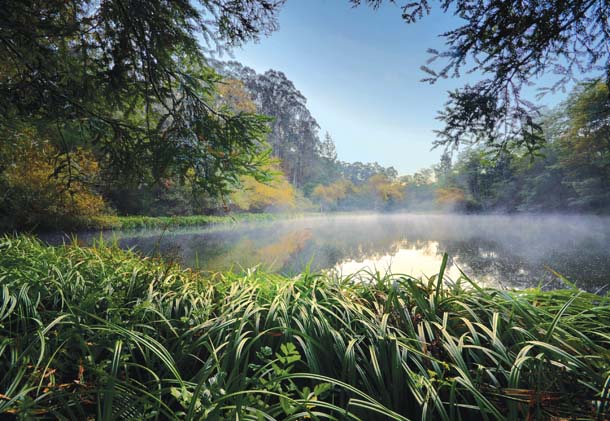
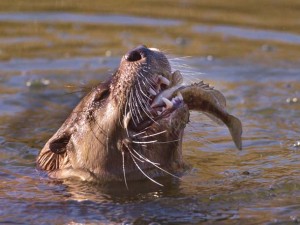
Jewel Lake in Tilden Regional Park in the hills above Berkeley is one such perch redoubt. A woodland-shrouded, one-acre pond created by a small dam on Wildcat Creek, it is a favorite destination for Tilden day-trippers. Though it seems an unlikely spot for rare species, it is prime Sacramento perch habitat: shallow, slightly turbid water with plenty of submerged vegetation where the fish can hide, breed, and lurk in ambush for prey.
Park biologists are particularly protective of Jewel Lake’s perch because the fish are genetically rich, making them distinct from other populations, and are considered a critical stock for reintroduction efforts.
But Jewel Lake’s suitability for Sacramento perch makes it equally attractive to other wildlife. There are red-legged frogs nearby, native and exotic turtles, and a variety of ducks, but also great blue herons that regularly stalk the shallows, river otters that venture in from Wildcat Creek to forage (including for perch), and other fish that compete with the perch for space and food.
Despite those challenges, UC Davis fisheries biologist Peter Moyle says ponds such as Jewel Lake are the perch’s best chances for survival. “Sacramento perch just can’t compete with introduced species — mainly eastern sunfish such as red-eared sunfish,” says Moyle. “They aren’t as aggressive, and they don’t guard their nests, so the young are easily predated. But they do reproduce very readily in ponds where they don’t have too much competition.”
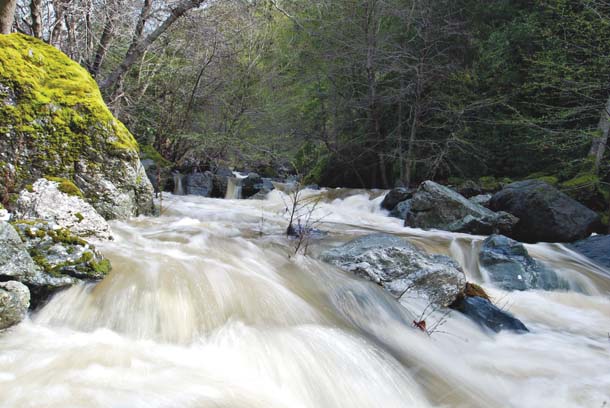
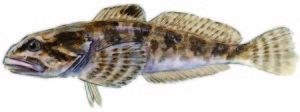
While scattered ponds and lakes are the last strongholds for Sacramento perch, the East Bay’s creeks serve as primary habitat for most of the region’s other native freshwater fish species. Of these, Alameda Creek is by far the most significant. Indeed, Alameda Creek might be more properly termed a river: It runs 45 miles from the slopes northeast of Mount Hamilton through Niles Canyon to San Francisco Bay, draining approximately 700 square miles of uplands.
Alameda Creek figured into California’s development from the beginning of Spanish settlement. Part of the original Vallejo land grant, its watershed was soon settled and subject to intensive agriculture. The Central Pacific Railroad pushed through Niles Canyon in 1869, and the pressures on the creek and its ecosystems have hardly relented in subsequent decades.
Today, the creek’s lower reaches have been channelized for flood control, and riparian woodlands have greatly diminished along the main stem. Three reservoirs block watercourses in its upper watershed, and water quality in general has declined due to sedimentation and agricultural and urban runoff.
But many native fish have managed to hang on — and even, in a modest fashion, thrive — in Alameda Creek. Foremost among them are prickly sculpins and California roach. Not surprisingly, flexibility has proven a boon for these two fish.
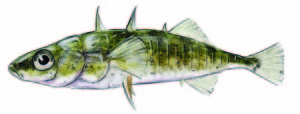
Another native fish found dominant in several East Bay creeks is the three-spined stickleback. Barely three inches long, this little fish is often used in fish behavior studies. “Three-spined sticklebacks can live in salt water or fresh water, and every degree of brackish water in between,” observes Leidy. “They maintain
separate populations in the different reaches of any drainage they inhabit. They also build nests, which they aggressively defend. Those are strategies that have served them very well.”
The historical masters of California’s inland waterways were the Cyprinidae, members of the minnow family. They had a diverse and abundant representation in the Bay Area, including Alameda Creek. Some have succumbed to human impacts (the thick-tailed chub, for example), but others have met the challenges of the modern world, overcoming everything from sub-par habitat to invasive competitors.

Among this number is the Sacramento pikeminnow, formerly known by the pejorative term of squawfish. These slender, silvery fish can sometimes approach two feet in length. Though they favor slow, clear streams with deep pools, they have proved fairly tolerant of disturbed habitat. East Bay streams are generally agreeable to them, particularly those that can support summer releases of cool water from upstream reservoirs, such as Alameda Creek.
But perhaps their greatest asset is their aggressive attitude, well known to any smallmouth bass angler who has tried unsuccessfully to get a lure past a school of pikeminnows. They eat fish, amphibians, crayfish — even small rodents.
“Before striped bass and black bass showed up, they were the top (fish) predator in California’s streams,” says Alexander. “They’ve been so numerous at times that they’ve affected other native fish: They’re very good at picking off salmon smolts during their downstream migrations, for example. Sometimes, particularly in the Columbia River system, bounties have been placed on pikeminnows. All in all, they’re still doing pretty well regionally.”
Another Alameda Creek native, the Sacramento blackfish, should be familiar to anyone who has visited Bay Area Asian fish markets. They’re largely filter feeders, using their gill rakers to capture algae and plankton. A staple fish for California Indians prior to Euro-American contact, Sacramento blackfish are also highly valued in the Chinese community and are typically sold from live tanks.

Back in the wild, especially in the upper reaches of Alameda Creek and its tributaries, watch for California roach, tough little fish (four inches long at most) that can withstand high alkalinity, warm water, and even moderate sewage contamination. When flows are low in East Bay streams, pools in the upper watersheds often teem with California roach; they can thrive where most other species, native or invasive, succumb. “You find them in most of the headwater streams in the Diablo Range,” says Leidy.
Lurking beneath the roach, pikeminnows, and blackfish — and perhaps getting by on their leftovers — the Sacramento sucker is another survivor, a bottom feeder that subsists on detritus, algae, and small invertebrates. Sacramento suckers often congregate in schools, their flanks flashing a dull gold-bronze as they maneuver for feeding space. They are found throughout most of the Alameda Creek system, from the upper reservoirs to the lower channelized reaches.
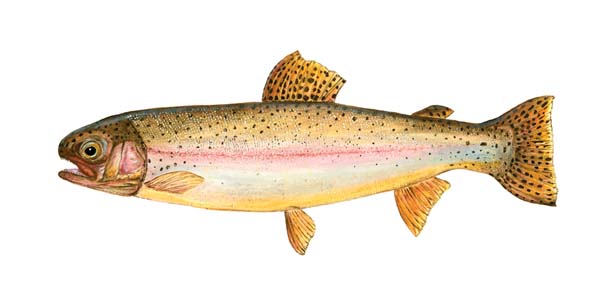
But if there is one fish that is emblematic of Alameda Creek, it is the steelhead: the big, anadromous rainbow trout of the West Coast. They were once common in all the streams of the East Bay, but their numbers have crashed and they are now federally listed as threatened. Alameda Creek, however, still has a residual steelhead run, and the population is expected to increase when a project to remove fish barriers along the lower river — including the BART weir, a bank-to-bank concrete apron that buttresses piers supporting the train tracks — is completed. “Once that’s accomplished, several miles of spawning habitat will once again be available to anadromous fish, and we can restock as necessary with our native rainbows,” Leidy says.
Happily, native East Bay rainbow trout — non-anadromous variants of the steelhead — are still relatively common, but no less precious for their abundance. Alexander deems them “genetic treasures.” “People originally learned about rainbow trout from our East Bay trout,” Alexander says. “We have evidence that they were first given the name ‘rainbow’ based on fish taken from an East Bay creek (San Leandro) and described in 1855. Not long after, rainbow trout were transported to temperate regions throughout the world.”
Dams have contributed to the decline of the East Bay’s steelhead — but paradoxically, the reservoirs these impediments have created have aided in the preservation of native rainbows: Instead of migrating to the ocean from their natal streams, rainbows migrate to the reservoirs that back up behind the dams. There they fatten, returning to the creeks that enter the reservoirs to spawn.
San Antonio Reservoir, a few miles southeast of Sunol Regional Wilderness, is especially fine rainbow habitat. Built in 1964 by the City of San Francisco, it stores cold, clean, highly oxygenated Sierra water from the Hetch Hetchy aqueduct. Like other East Bay reservoirs that contain native rainbows — Calaveras and Upper San Leandro reservoirs — San Antonio is closed to angling. The rolling, oak-studded uplands that surround the reservoir are well vegetated; erosion is minimal, and the lake doesn’t suffer the sedimentation problems that blight trout populations elsewhere. “San Antonio essentially serves as the ocean for these fish,” Leidy says, “and they’ve adapted well.”
While the fish are genetically similar to their ancestors that went to sea, they differ from steelhead in one significant way: size. In the ocean, steelhead graze for years on rich shoals of krill and forage fish. Returning steelhead spawners can occasionally reach weights of 20 pounds or more. “A mature, native rainbow trout by comparison pretty much tops out at three to four pounds,” says Alexander. “But for a landlocked rainbow, that’s a very respectable fish.”

Given the ongoing challenges faced by the East Bay’s native fish, biologists are always looking for opportunities to stabilize existing populations and establish new ones. At the Contra Costa Mosquito Abatement District, biologist Chris Miller is testing native fish as substitutes for exotic mosquito fish, currently the preferred means for controlling mosquitoes in California.
It’s not that mosquito fish are deficient at their task, Miller says. They do a fine job of gobbling mosquito larvae, and they are fecund in the extreme. Plant some mosquito fish in a pond or slough; they’ll reproduce with great rapidity, and mosquitoes will decline proportionately. The problem is that they’ll eat more than mosquito larvae and eggs. They’ll also chow down on endangered red-legged frog and tiger salamander eggs.
“That has raised some concerns, so we’re looking at native fish as alternatives,” Miller says. “I doubt we’ll ever move completely away from mosquito fish, but having some options could help with native fish restoration.”
Miller first tried Sacramento perch as a mosquito fish substitute, but that proved a no go. “They were hard to raise,” he observes. Today, he’s experimenting with Sacramento blackfish, California roach, and hitch, another heat-tolerant California native. He’s rearing the fish in more than 20 swimming pools, some located on foreclosed properties. That achieves the dual purpose of eliminating mosquitoes from water sources that would otherwise teem with larvae and contributing to research in native fish propagation.
So how’s it going? “The Sacramento blackfish are fairly easy to spawn and raise, so we have some hopes for them,” Miller says. “We collected some hitch under a Department of Fish and Wildlife permit two years ago, we’ve raised them to maturity, and we’re trying to get them to spawn. We’ve seen spawning activity and a few larvae, so we’re getting close. And we’re pretty optimistic about the California roach. Mosquito fish typically [stop eating] at lower temperatures, but California roach just keep on eating. We think that could make them valuable for late season abatement — say, at duck clubs in the fall.”
Miller’s work points to the kind of flexibility and innovative thinking needed to maintain the East Bay’s rich complex of native freshwater fish. In light of the challenges — everything from ongoing urban development to climate change — it won’t be an easy mission. But there are opportunities, says Moyle, and it’s incumbent on both scientists and citizens to seize them.
“The big thing we have going for us are the East Bay parks and the utility district lands,” says Moyle. “They’re giving us the ability to preserve and even enhance many of these fish populations—and they’re also giving us the chance to show the public that these fish exist, that they’re something worth saving.”
Glen Martin, former environmental reporter for the San Francisco Chronicle, writes on natural resource issues for various publications. His latest book, Game Changer: Animal Rights and the Fate of Africa’s Wildlife, was published by UC Press in March 2012.
Habitats of the East Bay Regional Park District This story is part of a series exploring significant natural habitats and resources of the East Bay Regional Park District (EBRPD), many of which are encountered in other parts of the Bay Area as well. The series is sponsored by EBRPD, which manages 65 parks, reserves, and trails covering more than 100,000 acres in Alameda and Contra Costa counties (ebparks.org).

